Chapter: 11th Home Science : Chapter 2 : Human Development and its Challenges
Infancy - Domains and Stages of Development
Infancy
Infancy is very critical and shortest of all
developmental periods. Infancy is the sec-ond most rapid period of development
and growth. Infancy begins with birth and ends when the infant in approximately
two weeks old. This period is divided into two periods namely
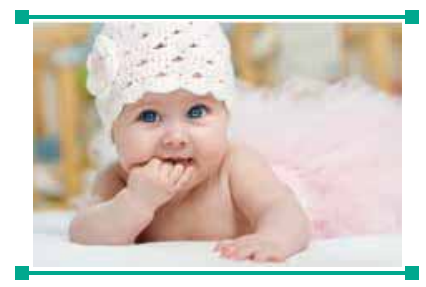
i. Period of the Partunate – from birth to fifteen to thirty minutes after birth. The infant continues to be a parasite until the umbilical cord has been cut and tied.
ii. Period of the Neonate – from cut-ting and tying of the umbilical cord to approximately the end of the second week of postnatal life. During this period, the infant must make adjustments to the new environment.

Activity 2
Collect photos/ Pictures of each stage of
the life span and paste them on a chart. Ob-serve and record pattern of
development.
a. Physical Development
Infants differ greatly in appearance and
physiological functions at birth and in their early adjustments after birth.
Body Length and Weight
At birth, the average infant weighs 3 to 3.5
kg and measures 50 cms (20 inches) in length. Weight in relation to height is
less at birth. The muscles of the new-born are soft, small and uncontrolled.
Physical Proportions
Babies have a large head and promi-nent
forehead, chubby cheeks and the chin is much too small. The nose is small and
flat. The neck is short and almost invisible.
The shoulders are narrow, while the abdomen is
large and bulging. Hands and feet are miniature. With the birth cry, the lungs
are inflated and respiration begins. Neonatal heart beat is more rapid.
Elimination of waste products begins in a few hours after birth. The relative
proportion is shown in figure 2.
b. Motor Activities
The first activities of human infant are
random, imperfect and uncoordinated. The most common of these include visual
fixation of light, spontaneous eye movement, sucking, swallowing, lifting the
head, hand movements, leg and foot movements and body jerks.
c. Sensory Abilities of the infant
i. Sight
At birth, the retina has not reached its full
development. There is no coordination between both eyes. At about thirty hours,
the papillary reflexes are well established. They can detect movement as early
as two or three days after birth. At seventh or ninth day of life, they respond
to different colours.
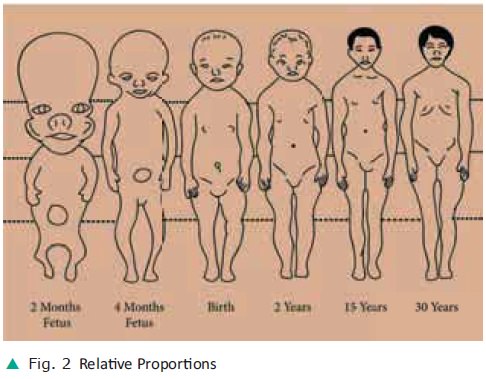
ii. Hearing
At birth, hearing is lowest because the middle
ear has amniotic fluid.
iii. Taste
During the first week of life infants react differently to dif-ferent tastes.
iv. Smell
Infants are able to sense the odours that
adults can sense.
v. Skin Sensitivities
The skin sensations of touch, pressure,
temperature and pain are present at birth.
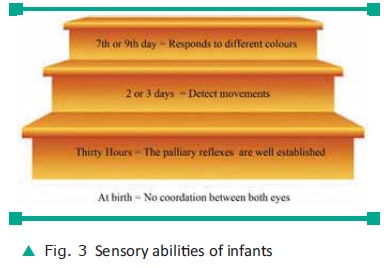
d. Adjustments during Infancy
Every new born infant’s adjustment to
postnatal life is difficult at first. They must make 4 major adjustments before
they can resume their developmental progress.
i. Breathing
During prenatal stage, the fetus is supplied
oxygen through the umbil-ical cord. When the umbilical cord is cut after birth
the infants must begin to breathe on their own. The infants take their first
breath imme-diately after birth as they cry since their lungs are filled with oxygen.
ii. Temperature Changes
Before birth, the infants are in temperature
of 98o–100oF in the uterine sac, while temperature in
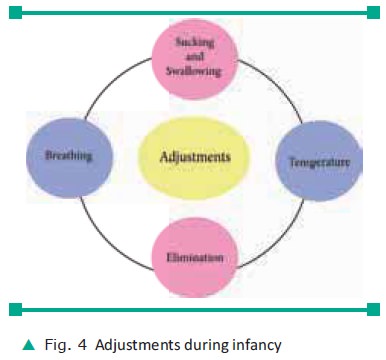
Newborns are usually kept warm by providing suitable warm clothing, warm
bedroom or placed next to the mother’s warm body.
iii. Sucking and Swallowing
Infant must now get nourish-ment by sucking
and swallowing, instead of receiving it through the umbilical cord. These
reflexes are perfectly developed at birth and are increased along with
development.
iv. Elimination
The infant’s organs of elimination begin to
work soon after birth.For-merly, waste products were elimi-nated through the
umbilical cord. After birth, defecation occurs at an average of 4 to 7 times
and urina-tion at an average of 18 times.
d. Emotional Development of Infancy
At birth, the emotions consist of only
pleasure and pain. Pleasantness is expressed by relaxing of body and is
elicited through patting, rocking, warmth and sucking. Unpleasantness is
expressed by tensing of the body, kicking, wriggling and crying.
e. Cognitive Development
Newborns interact with their environment
entirely through reflexive behaviours. They follow their instincts and
invol-untary reactions to get what they need: food, air, and attention. Babies
begin to grow and learn about their environment through their senses.
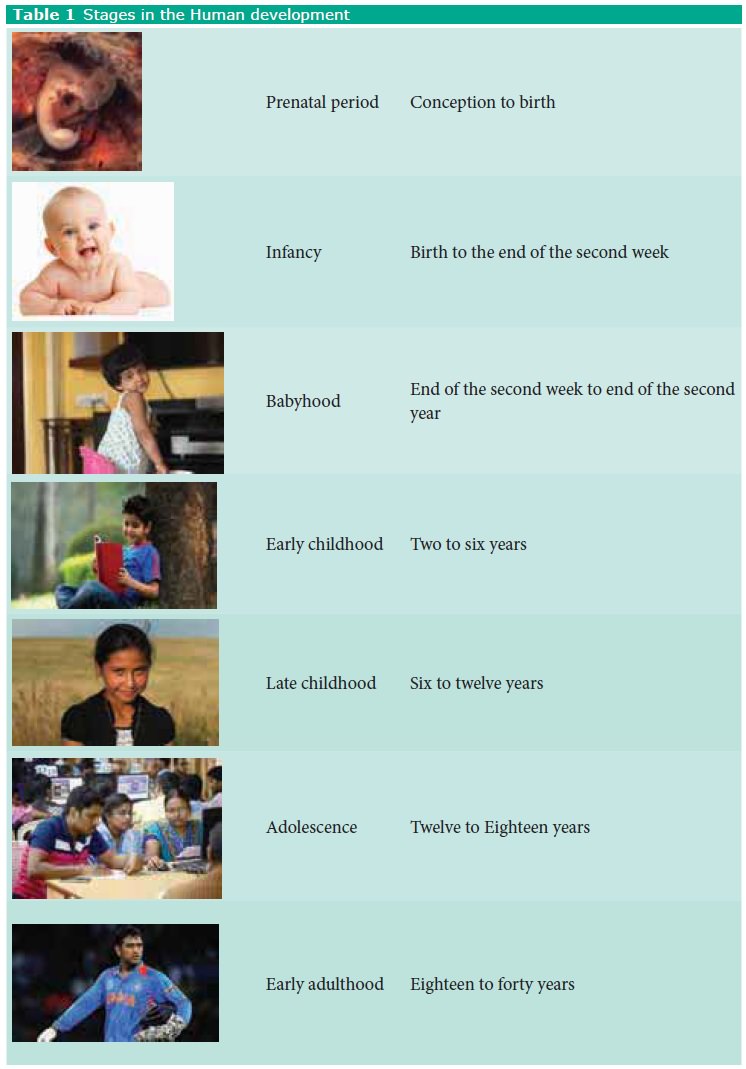
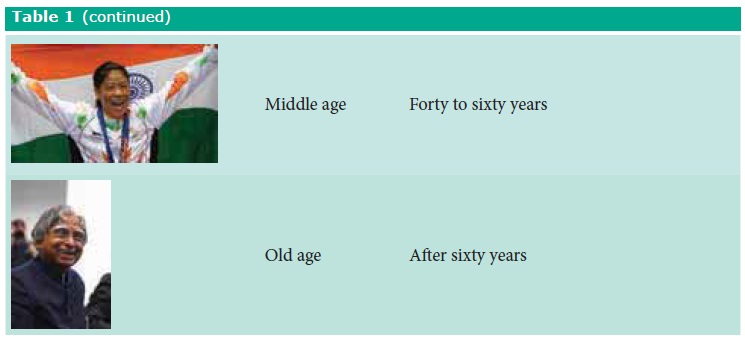
Related Topics